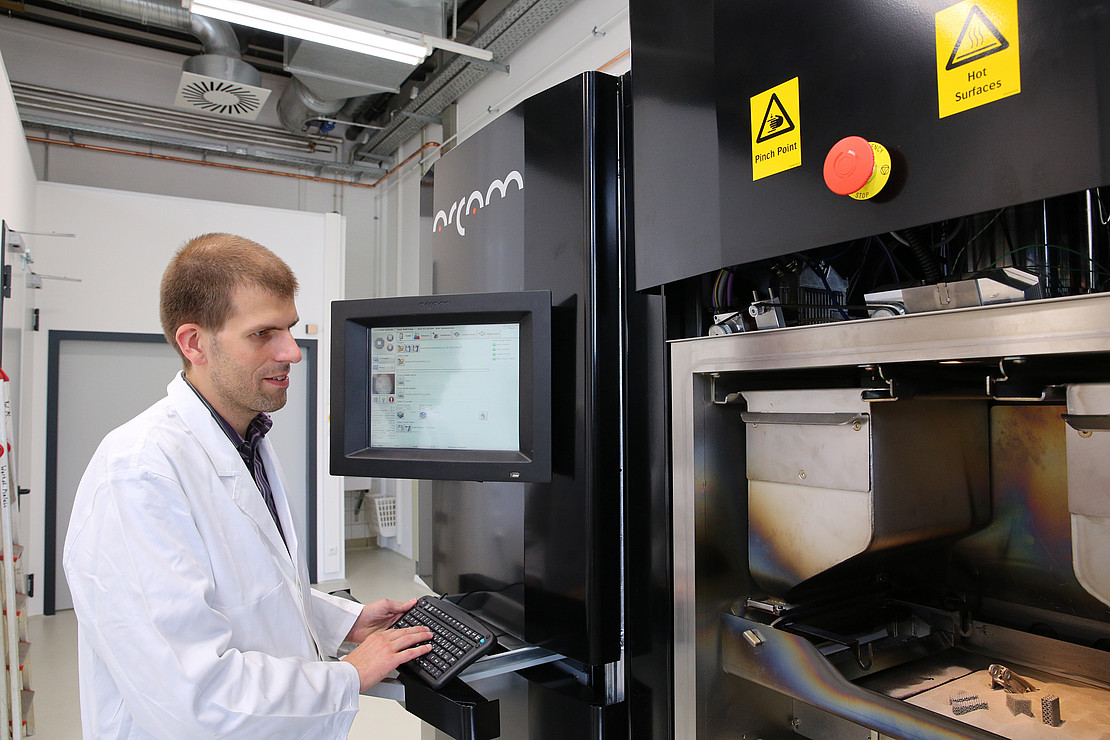This page contains automatically translated content.
Novel system enables live analysis in metal 3D printing
 Image: Andreas Fischer.
Image: Andreas Fischer.The researchers want to use the new facility to watch the materials live in all phases of the formation process: starting with the melting of the materials with the help of a laser, through to solidification, the researchers are in the picture at all stages of the process. In addition to purely optical observation, the researchers use X-rays to record the internal structure and corresponding transformations. At the same time, they analyze temperatures and record the process acoustically. All observation techniques provide their data in real time.
"Our goal is to research and test new materials that meet the very special boundary conditions of 3D printing,"says Prof. Dr.-Ing. Thomas Niendorf, head of the Metallic Materials department at the University of Kassel. In recent years, he has repeatedly caused a stir with new findings on 3D printing, including new alloys. Now, together with other researchers at the University of Kassel, he has received a funding commitment of more than two million euros from the German Research Foundation (DFG) for the development of the novel system.
"With this, we will be able to realize real digital twins via 3D printing in the future," says Niendorf. In order to generate a corresponding digital image of the real structures from the data, experts from the fields of production engineering, measurement and control technology, and artificial intelligence (AI) are needed. Prof. Dr.-Ing. Stefan Böhm, head of the Department of Separating and Joining Manufacturing Processes, and Prof. Dr.-Ing. Hans-Peter Heim, head of the Department of Plastics Technology at the University of Kassel, are significantly involved.
"We were only able to succeed in this highly competitive DFG procedure because the necessary expertise from the departments of mechanical engineering, electrical engineering and computer science, and civil engineering has come together at the University of Kassel," says Prof. Böhm. "The facility will be an essential cornerstone for many of the planned interdisciplinary research projects currently being advanced in our departments," emphasizes Prof. Heim.
"Materials research for 3D printing, whether metal or plastic, will find a globally visible focus in Kassel in the future. Not only basic research centers, but also local industry can look forward to the unique opportunities," says Niendorf.
More info: https://www.dfg.de/service/presse/pressemitteilungen/2019/pressemitteilung_nr_63/index.html
Contact:
Prof. Dr.-Ing. Thomas Niendorf
University of Kassel
Institute of Materials Engineering
Department of Metallic Materials
Tel.: 0561 804 7018
E-mail: niendorf@uni-kassel.de